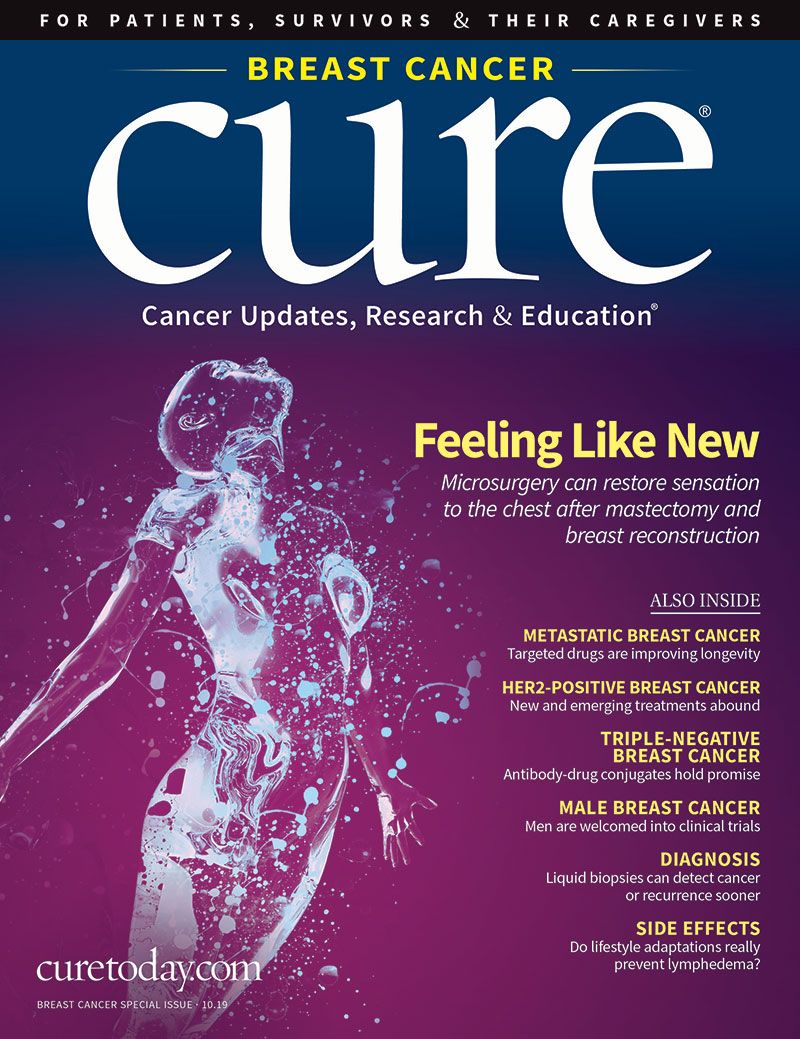Publication
Article
CURE
New Drug Pipeline for HER2-Positive Treatment Expands
Author(s):
The development of the drug Herceptin (trastuzumab) to treat HER2-positive breast cancer marked an enormous milestone: In the opinion of many, it represented the birth of targeted therapy for cancer.
The development of the drug Herceptin (trastuzumab) to treat HER2-positive breast cancer marked an enormous milestone: In the opinion of many, it represented the birth of targeted therapy for cancer.
Drugs already in the cancer toolbox targeted hormones, but Herceptin was the first to disable an oncogenic, or “cancer-driving,” protein. The drug targets the HER2 protein, which the body manufactures excessively when there are extra copies of the HER2 gene. The extra protein contributes to cancer’s growth.
Although the first prototype of Herceptin worked, scientists didn’t know exactly how. In labs, the drug only mildly inhibited cell growth, but in the body, it had a big impact on mortality in early-stage disease and on the risk of recurrence. We know now that this was because monoclonal antibodies such as Herceptin don’t just target a protein and diminish its function but also activate the immune system. The net effect is that the drug stops cancer cells from growing and dividing, by both blocking HER2’s growth-stimulating activity and unleashing the immune system against cells that express HER2.
Recently, scientists applied that knowledge to the development of a more potent member of this class of drugs: margetuximab. A feature article in this special issue of CURE® discusses this experimental drug — engineered to better stimulate the immune system to further delay disease progression — and other types of emerging medicines that hold promise for the treatment of HER2-positive breast cancer.
Among them are targeted drugs known as tyrosine kinase inhibitors that also block growth factor signaling (messages to cancer cells to grow and multiply), but in a different way: They inhibit the enzyme part of the protein. These drugs target HER2 (or related growth factor receptors in the HER family) but spare proteins that are needed for other normal functions. The same strategy has been successful in lung cancer, where drugs that target a protein known as the epidermal growth factor receptor improve patient outcomes. In HER2-positive breast cancer, kinase inhibitors have proved very effective in the lab, much more so than antibodies like Herceptin. In humans, the drugs can generate a rapid response but have little effect on survival because cancer cells rewire themselves to bypass it. Moreover, the immune effect given by antibodies may last longer.
Our article also touches on investigational antibody-drug conjugates, another new avenue for treating this disease. These drugs link a targeted agent with a chemotherapy.
Although the pipeline is crowded with drugs that aim to treat HER2-positive breast cancer, that doesn’t mean the toolbox is complete. Patients with this subtype still need new therapies because their cancers can become resistant to available drugs.
The good news is that the immune-stimulating function that at first made Herceptin so mysterious is still paying unexpected dividends. This aspect of monoclonal antibodies might explain why there are some really long-term survivors of HER2-positive breast cancer; it’s not unusual to run into someone who’s lived with the disease for 10 years, even in the face of brain metastases. And the mystery continues: There’s speculation that some patients could maintain their health even if they stopped taking the drugs, due to persistent immunity, but that question has yet to be answered.
It’s fortunate that researchers are dedicating themselves to answering these queries and developing a host of new treatments for HER2-positive breast cancer so that care for these patients can continue to improve.





